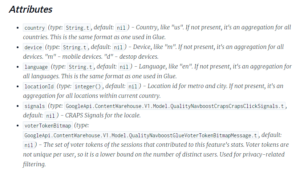If you have a business website, there’s a good chance that WordPress is your content management system (CMS). It’s the most popular CMS in the world, after all, and that’s because it’s easy to use, you can create professional websites in hours – and it’s free.
But on top of that, it gives you a huge amount of control over your optimisation efforts.
SEO is important for nearly every business with a website. With WordPress, you have a CMS that is easy to optimise to boost your chances of ranking in the search engines and getting found by your target customers.
But while WordPress is undeniably a fantastic platform for building an optimised website, there are a number of steps you need to take to ensure it is optimised effectively.
In this blog, we’ll look at the main steps you should take to optimise your site properly.
Install Yoast
One of the great things about WordPress is that there is always a plugin to help you perform any specific function you are looking for.
When it comes to SEO, you are spoiled for choice. But there is one SEO plugin that stands out: Yoast.
Yoast comes in free or premium versions. The free version is suitable for most websites, but you can always upgrade if you feel the need to.
Once you have installed Yoast by following the instructions, it provides you with a useful setup wizard to get everything up and running properly so you don’t have to go delving deep into the settings of your website. You can change most of the useful SEO settings right from within the plugin.
You’ll then be ready to start optimising your site in other ways.
Submit Your Sitemap
As with any site, optimisation starts with a few basic steps so you can get your site into shape. This will help with all of your future SEO efforts.
First of all, submit your sitemap. This is easy to do and you do not need to be a developer. If you have installed Yoast, this step is even easier.
All you will need to do is open a Google Search Console account if you have not yet done so. You can then link your account to your website via the Yoast plugin using the setup wizard. It only takes a few seconds, and the wizard takes you through the instructions.
While you’re at it, submit your sitemap to Bing Webmaster Tools as well. Again, this is simple to do with Yoast, and here are the instructions on how to do this.
Encrypt Your Site with HTTPS
If you have not yet got an SSL certificate for your website, that’s something you’ll want to sort out ASAP. Why? Because since July 2018, Google has been highlighting websites without one as ‘not secure’ in the Chrome browser.
Having an HTTP address could put customers off using your site, especially if you ask for their payment details. But it’s also an SEO issue. Using an SSL certificate is a ranking signal, and that means it can affect where your site shows up in the search rankings.
Fortunately, it’s easy to get an SSL certificate. Depending on your web host, you may be able to get one free. On WordPress, you can then use a plugin like Really Simple SSL to get it working properly.
You can also buy an SSL certificate. They come with different levels of security, so it depends on your needs. Just make sure you have one.
Optimise Your Site for Speed
A fast website improves the user experience, and if your site takes too long to load, your visitors may very well give up and leave.
Google knows this, and it wants to provide its users with the best results in its search engines. That means sites that provide a good user experience. As such, site speed is a ranking signal, so you need to make sure your WordPress site is as fast as possible.
Start by heading to GTmetrix and plugging in your URL. This will give you a good idea of how fast it is. You can also do the same at the Google PageSpeed Insights website.
Making improvements that will speed up your site can get quite technical, so you may want to get your developer to make the changes to speed things up. But you can do a few things yourself.
One of these steps is to download the WP Rocket plugin. This is a premium plugin, but it’s not too expensive, and it will make lots of changes automatically to optimise your site. You can also change settings yourself, but you may need some help to do this.
You could also make some larger changes to your site, like changing your web host to one that specialises in WordPress websites (SiteGround and Bluehost are both known for this). You could also upgrade your WordPress theme to a premium theme that is lightweight and therefore faster.
Optimize Your Images
Images also play a role in the speed of your site, so it makes sense to optimise them. The easiest way by far to do this is to use a dedicated plugin. There are a few that you can use, but Imagify is one of the most popular.
This comes with a free version and a premium version. The version you choose will depend on how many images you have on your site and how often you upload new images.
It essentially allows you to choose how much you want to optimise the images, and this will then automatically reduce their size so they load faster – speeding up your site.
Another way to optimise your images for search is to add alt text. The problem with search engines is that they cannot read images – they need text. Fortunately, you can add some descriptive text to each image using keywords where appropriate so the search engines will be able to tell what the image displays.
It won’t send you soaring up the rankings, but it is all part of good optimisation practice, so get into the habit of adding alt text whenever you upload an image. You can do this using the media uploader in WordPress – here’s a guide to doing this.
Switch to Accelerated Mobile Pages
Mobile optimisation is another ranking signal. Sites that are optimised for mobile visitors will stand a much better chance of appearing in the mobile search results. With more people using their mobile devices to search online, that’s a big deal for your business.
Start by using a responsive WordPress theme. That’s not too difficult because most themes are now responsive, meaning they will display correctly on mobile devices, improving the user experience.
But you can do even more by using Accelerated Mobile Pages (AMP). These speed up your pages on mobile devices, so when someone sees a link to your site in the search results and clicks on it, your site will appear almost immediately.
Because web users are now more aware of AMP, when they see that your site is optimised, they may even be more likely to click your link, driving more traffic. Get your developer to help you with this or use the AMP plugin.
Optimise Your URLs
Another simple step is to make sure your URLs are optimised for search. How? By changing their permalink structure.
This determines how the URLs are created so that your URLs include the title of the blog post – which will usually incorporate your main keyword for the page.
This is easy to do in WordPress. Just go to ‘Settings’, ‘Permalinks’, and change them here. Choose ‘Post Name’, and from now on your new posts will have URLs that use the name rather than something random. This is a small but effective step for your overall optimisation.
The next thing to do is ensure your pages and posts are optimised for your keywords. Again, this is easy to do, but it may take some time. In WordPress, just go to edit the posts and pages and make the changes directly within them.
You will also want to create meta descriptions for every page. This is not a huge factor in your SEO, but the meta description will show up in search along with the page title. It therefore, makes sense to create something compelling to encourage more people to click on it.
Optimise Your WordPress Site Properly
So there you have it. These basic improvements will help you to optimise your WordPress website for search. They should not take too long to do, but overall they can have a big impact.
Once you’ve made the changes, get into the habit of thinking about optimisation every time you create a new page or post a new blog. Focus each piece of content on a specific keyword, add alt text to your images and create meta descriptions for each page.
While the creation of high-quality content for backlinks and shares is necessary to get your site ranking, making sure your site is optimised for search from the start will only help you to rank higher and generate more organic traffic.
If you need support in optimising your WordPress website why not get in touch with one of our exceptional SEO consultants who will be more than happy to discuss your options.
Alternatively, if you require support in managing your WordPress website then take a look at our Website Management services.



